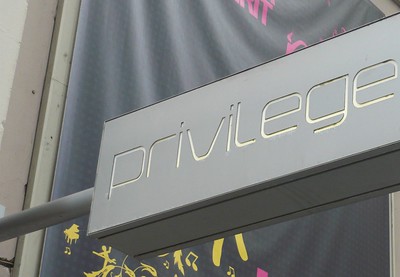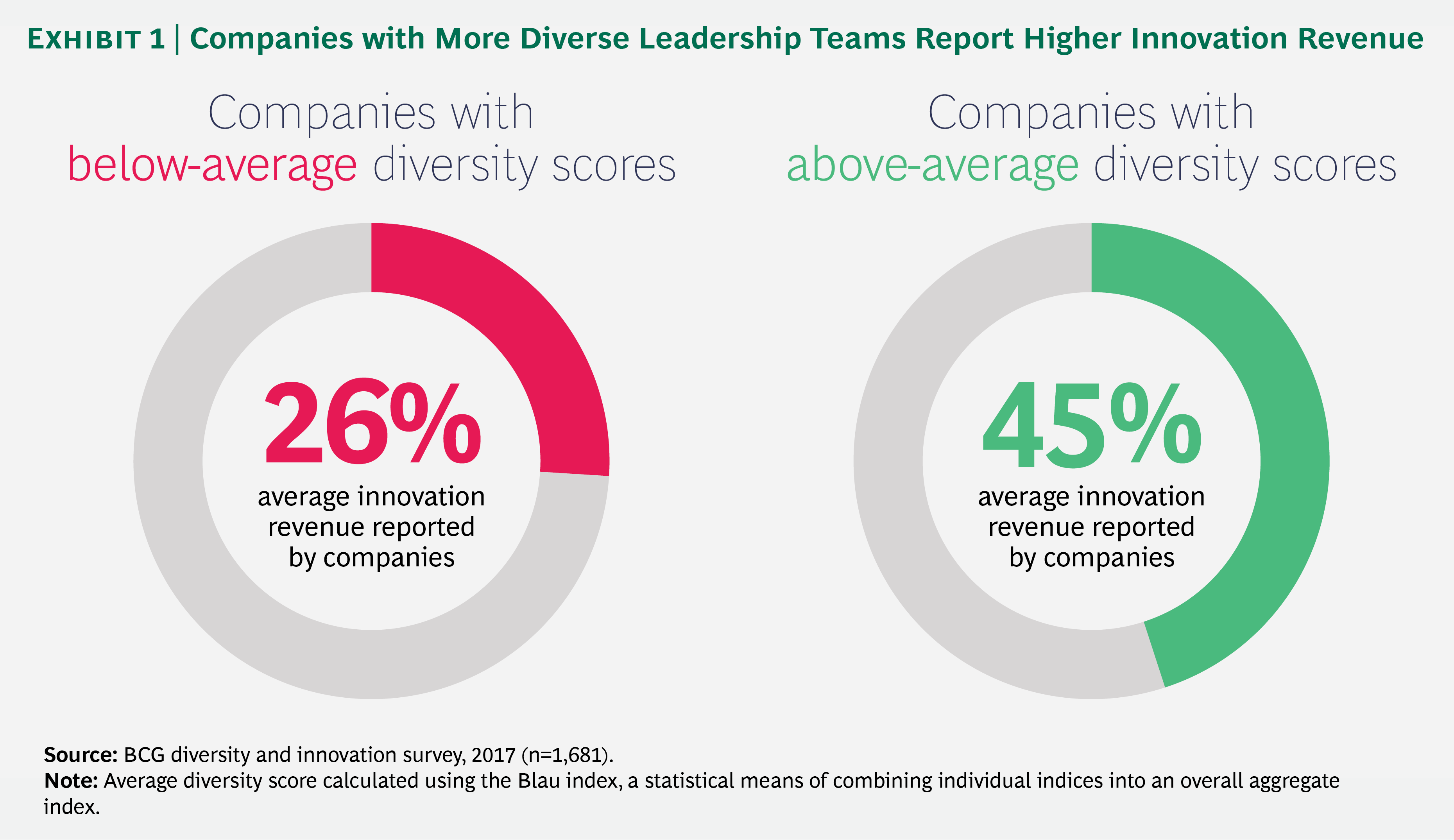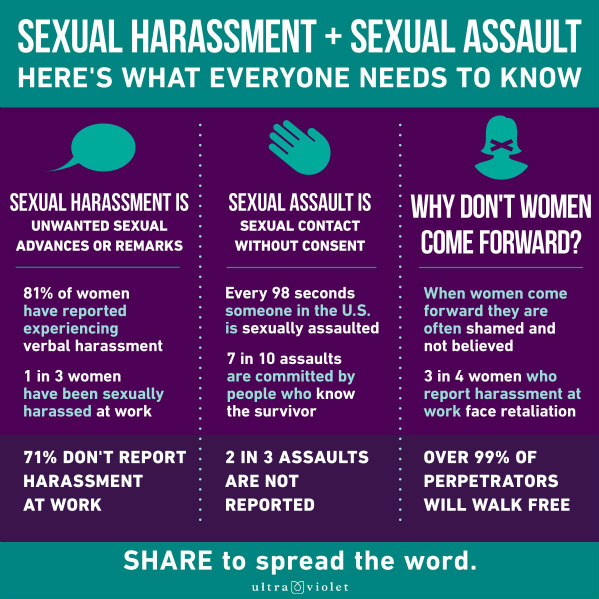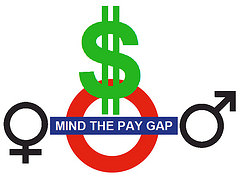|
|
|
Wednesday, December 11th, 2019

Three years ago Jason Ford, an entrepreneur and investor in Austin, TX, wrote a post on Medium titled The real reason my startup was successful: privilege.
It is far more honest and accurate than the typical stuff from founders talking (bragging) about how they did it on their own.
This is especially true of younger founders.
Like Rick yesterday, they have no recognition of the privilege that eased their lives and underlies their success.
The post was thoughtful, intelligent, calmly stated, no insulting, or trolling.
But a lot of people scanned it, their focus caught on a couple of words, so the misinterpreted what Ford had written, in many cases angrily.
A couple of months later he followed up with White privilege is real to respond to comments from the first post.
Ford says it better, but privilege, whether White or based on gender, zip code, alumni, or any of a myriad of other things is very real.
Ford says it much better than I do; read his posts and spread the word.
No problem, large or small, was ever solved by ignoring it.
Image credit: Stephen Dann
Posted in Culture, Personal Growth | No Comments »
Friday, March 16th, 2018

After reading about Gusto’s approach to diversity, I posed this question to a male founder I know and a friend of his, also a founder.
As a founder, what would you do if a top performer asked for a one-on-one meeting because she was uncomfortable and being treated poorly as the one woman on a team of 18 men.
The responses weren’t surprising; one was disappointing and the other disgusting.
One said he would do what he could, but also tell her that she’d be better off if she toughened up.
I don’t know the second guy very well, but it turned out that he is much more a bro. He said he’d tell her to stop whining and “grow a pair” and if it still bothered her maybe software engineering wasn’t where she belonged.
Compare them to Gusto cofounder and CTO Edward Kim’s, response.
Kim, Lee says, was extraordinarily receptive. In fact, he made it a personal project to study the gender breakdown on the engineering teams at other tech firms. The numbers he found were dismal.
Only 12% of the engineering staffers at 84 tech firms were female… He also read a 2015 McKinsey study showing that companies with diverse workforces outperform financially. “The fact that no one else in tech was able to really crack the gender diversity nut and solve it represented an opportunity for us,” Kim says. “If we want to reimagine what HR is like for the very diverse workforces of our small-business customers, we ourselves have to build a diverse workforce.”
Boston Consulting published findings similar to McKensey’s in January. (Well worth reading.)
 Kim’s and Gusto’s efforts have paid off handsomely. Kim’s and Gusto’s efforts have paid off handsomely.
- Gusto’s women-only recruiting effort lasted six months. It stopped, Kim says, because “we exceeded our goals.”
- Though hiring women engineers took more time, Kim says, Gusto never dropped its standards. “It bothers me when people say that prioritizing diversity lowers the bar in terms of the caliber of talent you’re able to hire,” he says. “That is simply not true.” Nor, he says, was there any pushback from inside Gusto.
- Gusto also addressed its compensation policy. Since 2016 its salaries have been audited by Mercer, a human resources consulting firm, which has found no gender pay disparity. Benefits include 16 weeks of paid leave for a primary parent, plus an additional $100 a week for groceries and food deliveries, $100 a month for six months of housecleaning and up to $500 for a baby-sleep coach.
- Now that 17 of Gusto’s 70 engineers are female, it’s getting a little easier, says Gusto’s HR head, Maryanne Brown Caughey. “It’s kind of a domino effect,” she says. “Women know they’re joining a welcoming community.”
While Kim is pleased with the results, he isn’t resting on his laurels.
While Gusto has made progress, its engineering team has no Latinos and no African-Americans. Kim says Gusto has two hiring goals in 2018: senior women and racial diversity in engineering. “The way we make progress is by focusing on one problem,” Kim says, “and then we move on to the next.”
Role model, indeed; techdom needs a lot more founders like Kim.
Image credit: Gusto
Posted in Culture, Hiring, Role Models | No Comments »
Friday, October 20th, 2017

As many of you are aware the news this week has been dominated by the allegations against Harvey Weinstein and his sexual harassment and assaults on a variety of women.
As we learn more about what has occurred a new movement has started, #metoo. Women who have been harassed, assaulted, or worse are speaking up. Some for the first time.
As I have read through some of the posts of my personal friends and spoken to my wife, I am realizing this is much more rampant than I thought.
It has lead to some interesting discussions at work with my colleagues that I never imagined I would have. Most of the women I have spoken with have a story. Perhaps it was flirting that went beyond welcomed attention, an off-hand comment and in one case full-on assault.
It was heartbreaking to hear, as well as enlightening.
One thing I learned today, though, is the other ways women in the workplace have to cope.
In two separate conversations today I learned how my female colleagues have had to deal with aggressive men, misogamy or simple brush offs.
I am in the IT sector and the women in the technical roles have dealt with from not being taken seriously to not being trusted simply because of their gender.
I write all of this as a testament of how we as a society must do better.
I am still amazed that we can pick out the differences amongst each other, differences that we have zero control over, and tear one another down.
The fact that we allow gender to dictate how we should treat one another is shocking.
I am not naive enough to think that we can all just get along, however if we claim to be enlightened, then perhaps we should act like it.
Image credit: @UltraViolet
Posted in Personal Growth, Ryan's Journal | No Comments »
Tuesday, July 5th, 2016

By any measure Mark Benioff runs a successful, highly profitable company.
Moreover, he runs one of the most socially responsible companies in the world.
This BI interview with Benioff captures in a short read how Salesforce is a perfect example of a founder who incorporated his values into his company.
His socially conscious approach began when he launched Salesforce as a startup; long before it was profitable.
I view that as a critical part of my business. That’s why when I started Salesforce, on day 1, we put 1% of our equity, 1% of our product, and 1% of our time into Salesforce.org.
Where other CEOs talk, wring their hands and use media time to bemoan the problems, Benioff fixes them.
Gender pay disparity is a good example.
When he saw proof that women were being paid less he made changes to eliminate the disparity and did it without whining or handwringing.
Two women, one our head of HR and one who ran our women’s group said, “Hey, we’re paying women less than men at Salesforce.” I didn’t believe it at the time, when we actually looked at the information we were actually paying women $3 million less than we were paying men for the same amount of work, and so we made an adjustment to how we pay women.
When asked how other companies handle the issue he furnished not only the how, but also the why it doesn’t happen.
Every company has an HR system, every company knows their salaries, that’s obviously how they pay people, and all a CEO has to do is push a button and look at, “Do I pay women the same as men?” Most CEOs are afraid to push that button.
Furthermore, Benioff sees an attitude from a few academics in the 1970s as responsible for much of today’s inequality, — in short, he doesn’t believe that that a company’s primary purpose is to maximize shareholder value.
I believe that for business, which is where I can speak, we have to shift from shareholder maximization to stakeholder maximization.
Salesforce has been ranked as one of the top innovative companies year after year for a very simple reason.
They can’t look to me for all the answers. I don’t have them, and that’s not our culture. They are coming to me with their ideas and their visions. It’s not my role to be the only visionary in town.
All in all, Marc Benioff is a superb role model, whether your company is large, small or just starting up.
Flickr image credit: TechCrunch
Posted in Ducks In A Row, Entrepreneurs, Personal Growth | No Comments »
Tuesday, March 1st, 2016

There is far more to diversity than gender, but I’ll save my comments on that for another post, although everything I say here applies to the wider exclusions.
Last Friday, in polite language, KG commented on the ignorance/idiocy of not hiring women, since they have to be so much better to achieve the same opportunities/promotions as men.
For proof, you have only to consider GitHub’s treatment of contributors.
They found that when a woman programmer made a contribution to an open source project, that work was more likely to be accepted by their programming peers than contributions by men as long as those judging the work didn’t know the programmer was a woman.
If they did know the programmer was a woman, the work was more likely to be rejected.
For the unknowing, the bro culture refers to the culture found in most frat houses (although it exists in several other forms) and has become a hallmark of startups in Silicon Valley.
Jennifer Brandel, co-founder and CEO of Hearken, and Mara Zepeda, co-founder and CEO of Switchboard, wrote a terrific post that starts by depicting the startup ecosystem in sexual terms that perfectly drive the point home with the same class and light touch as Tootsie used to drive its point home back in 1982. (It’s a great read with serious analysis and suggestions for change.)
Startups, like the male anatomy, are designed for liquidity events. Consider the metaphors: “seed” funding, “up and to the right” trajectories, “acceleration,” “exit.” Paul Graham’s seminal essay “Startup = Growth” argues that explosive growth is the only measure of success. “Making it” means one of two things: go public or sell.
The bro culture also manages to turn a blind eye to just how much of their vaunted tech is the result of women.
Hilariously, it was not only a woman who the technology that paved the way for everything from Wi-Fi to GPS, it was film goddess Heddy Lamarr. She invented a secret communications system during World War II for radio-controlling torpedoes.
Dr Grace Murray Hopper invented COBOL, the first business-friendly programming language, in the 1940s. She was a computer scientist, a rear admiral in the U.S. navy and the first person to use the term “bug” in reference to a glitch in a computer system when she literally found a bug (moth) causing problems with her computer.
Then there is Ada Lovelace, the first computer programmer who wrote the first algorithm and dreamed up the concept of artificial intelligence; her notes were an essential key to helping Alan Turing’s work on the first modern computers in the 1940s.
Not to forget Dr Shirley Jackson include portable fax, touch tone telephone, solar cells, fibre optic cables, and the technology behind caller ID and call waiting.
Most of male culture runs on pizza and beer, which, according to Beer Historian Jane Peyton was developed, sold and drunk but Mesopotamian women centuries ago.
A few more that guys should be aware of,
- Nancy Johnson invented and patented the ice cream maker in 1843 and is still in use today.
- Margaret A Wilcox invented the car heater in 1893, as well as a combined clothes and dishwasher.
- Elizabeth Magie invented Monopoly in 1904.
- Anna Connelly invented the fire escape in 1887.
- Maria Beasely invented life rafts in 1882, as well as a machine that makes barrels.
- Dr Maria Telkes, a psychiatrist, invented residential solar heating.
- Letitia Geer invented a one-handed medical syringe in 1899.
- Florence Parpart invented the electric refrigerator in 1914, along with improving street cleaning machines.
- Josephine Cochrane invented the dishwasher (where would guys be without it?) in 1887
- Marie Van Brittan Brown invented CCTV in 1969.
- Margaret Knight invented a machine that makes square bottomed paper bags in 1871, although Charles Anan tried to steal her work claiming that it wasn’t possible for a woman to create this brilliant invention. She also invented a safety device for cotton mills when she was 12 that is still being used today.
- Alice Parker invented a natural gas powered central heater in 1919 that inspired the central heating systems used today.
- Stephanie Kwolek invented Kevlar 1965, to which thousands of guys, and more recently gals, owe their lives.
Unwelcoming/disparaging culture goes far beyond the startup world and the pro/con about women is a minefield for companies, as witnessed by the Lands’ End contretemps currently playing itself out on social media.
The catalog had the temerity to feature Gloria Steinem, which brought a strong reaction from a customer.
“This family will not buy one single thing from Lands End ever again unless this drive highlighted by Gloria Steinem is fully retracted. (…) Lauding Gloria Steinem is beyond what I can understand from a company that ‘appears’ to celebrate family.” (Posted to the company’s Facebook page.)
Lands’ End apologized and scrubbed all mentions of Steinem, along with references to the ERA.
This, of course, brought enormous reaction from the other side.
As of midmorning Friday, close to 4,000 people had commented on the company’s Facebook post that addresses the flap.
Oops. Damned if you do and damned if you don’t.
Lands’ End and other companies may lose customers when they end up in the middle of this no-win situation, but the bro culture has a much higher cost.
Talent.
And that can cost them the very breakthroughs that would put them on the road to an IPO.
Then again, with that attitude they don’t deserve great talent.
Which leaves KG and kindred spirits to scoop them up.
Flickr image credit: Duck Lover
Posted in Culture, Ducks In A Row | 1 Comment »
Wednesday, November 11th, 2015

Following up on yesterday’s post about women and inequality, Adam Grant linked to a previous post about his own unwitting blindness.
In that post were some stats that should make everyone, including those who think things are improving, wake up to reality and understand just how far we are from anything actually changing.
Today, U.S. corporate boards have more men named John, Robert, William, or James than women in total. Recent coverage by Claire Cain Miller has brought more chilling data to light: in math, when graded anonymously, girls outperform boys, but when teachers know their names, boys do better. [emphasis mine] And when students rate their favorite professors, they describe men as “geniuses” and women as “nice.” This is sad and unacceptable. We may be in the 21st century, but we’re still a very long way from gender parity.
In study after study, on everything from candidate resumes to professor’s evaluations to student preference, where the only difference in identical credentials is the sex, as disclosed by the name, young and old, male and female, rated the women inferior to the men.
Look at the above statement (in bold), what chance is there that anything will change when kids are already subject to the same attitudes?
Women are overtly and covertly denigrated and sisterhood is a farce.
It’s been said change would come as older generations aged out and bosses were replaced by younger ones who grew up in a more diverse, tolerant and inclusive world.
I started hearing that 50 years ago and am still waiting.
In fact, we are moving backwards; the world was far more woman-friendly in the 80s and 90s, than it is now.
So don’t hold your breath; there is a quantum difference between political correctness and authenticity.
Flickr image credit: Anthony Easton
Posted in Culture, Personal Growth | No Comments »
Monday, August 17th, 2015

In bygone days the ‘my father can beat up your father’ was a favorite taunt.
These days it’s more often ‘my father earns more than your mother’.
So goes the gender pay gap and has since women entered the workforce.
Much has been written and many hands have been wrung over the disparity of pay between men and women doing the same job.
But the bias isn’t always intentional.
A vast majority of them are fair-minded guys who want women to succeed. They’re absolutely certain that they don’t have a gender problem themselves; it must be some other guys who do. Yet they’re leaders of companies that pay men more than women for the same jobs.
Now an intriguing idea has surfaced playing off the SEC’s new rule forcing companies to publish comparisons of how much chief executive officers take home compared with ordinary employees
The idea is to do the same between males/females within each company.
This would be especially interesting in tech, which admits that diversity may be a great goal, but won’t happen any time soon, even in companies which have made it a priority, such as Apple.
In the event the idea gains any traction you can assume enterprise will fight it as passionately — probably more — as it fought the CEO comparison, which took five years to become reality.
Without the force of law, how likely that the comparison could become a reality?
There are two ways that come to mind.
- The first is to have a company step forward and offer the information voluntarily.
- The second is that an internal whistleblower will publish the information anonymously on social media.
The second is far more likely, especially in the data-driven world in which today’s companies must operate.
Flickr image credit: Mike Licht, NotionsCapital.com
Posted in Compensation, Culture | No Comments »
Friday, May 23rd, 2014
 If you don’t believe that there is a gender gap in the startup world’s so-called meritocracy entrepreneur Roger Huang begs to differ. If you don’t believe that there is a gender gap in the startup world’s so-called meritocracy entrepreneur Roger Huang begs to differ.
The internet is being shaped by males to be comfortable for other males. For those of us fighting for an open, and inclusive Web, this is something that should change, and it’ll certainly take more than a new application.
Huang’s post is worth reading because it is well annotated with links to the research and articles for the stats he cites.
I’ve written about it, too, and have come to the conclusion after years of listening to bosses that there is an unacknowledged underlying problem.
Most tech people recognize the problem, but don’t see the NIMBY side of it.
NIMBY means ‘not in my backyard’, meaning fix the problem without affecting me, e.g., create low income housing, but don’t put the housing in my neighborhood.
Backyards can refer to company and mindset.
That makes it pretty simple; if all bosses cleaned up their own backyard there wouldn’t be a problem.
So while problems in other people’s yards and on the wider stage loom large, a NIMBY mindset shows their own backyard as weed-free and thriving.
Flickr image credit: Jason White
Posted in Culture, If the Shoe Fits, Personal Growth | No Comments »
Wednesday, January 22nd, 2014
I am truly tired of listening to the likes of Marissa Mayer and Sheryl Sandberg talk abut women in the workplace when, in fact, their world bears no relationship to the majority of women locally or globally.
Elite women, like their male counterparts, marry later and have fewer children than their less-educated sisters. They take shorter breaks from paid full-time employment (a reverse from past trends) and claim an ever greater share of overall female income while relying on nannies and other household help.
Also, I’ve always doubted that having hot women wearing minimal outfits as a booth attraction at tradeshows gives a company an edge. And guess what? It doesn’t.
Booth babes do NOT convert. How do I know? Well, I actually split-tested this a few years ago and the results were indisputable. If you have invested in a trade show to generate new business, using booth babes is a lead conversion boat anchor. –Spencer Chen, marketing professional
Interesting research from Harvard Business School Senior Lecturer Jill J. Avery focuses on the effect female cooties have on masculine brands. Who knew that masculinity was so very fragile?
“Gender contamination occurs when one gender is using a brand as a symbol of their masculinity or femininity, and the incursion of the other gender into the brand threatens that… Girls and women seem to have more freedom to consume products and brands commonly associated with the other gender than boys and men, who are more tightly constrained by the prevailing views of masculinity that associate being masculine with avoiding anything feminine.“
Then there’s the ongoing problem of women in STEM—or the lack of them, actually.
There is a lot of systemic bias in the system against young women taking this kind of direction with their studies and their career. And we must change that bias and it must be changed at the middle school level.
While many recognize that solutions need to be applied in middle school or sooner, new research shows that just having a male teacher may impede progress and intimidate interest.
The stereotype that men are better at math than women is so ingrained in our culture that women feel stereotype threat — and as a result, perform more poorly in math — just from watching a man take a dominant role in a math study group.
IBM is one company that is actively fighting back.
Women have played a key role in some of the most important innovations in IBM’s history. Meet some of them through the Technologista series that celebrates some of these accomplishments.
I think my favorite pro STEM-for-girls is Debbie Sterling, who starts much earlier. She’s the entrepreneur who not only didn’t buy into the hype, but also created toys to combat it.
Who said girls want to dress in pink and play with dolls, especially when they could be building Rube Goldberg machines instead?
YouTube credit: GoldiBlox
Posted in Change, Culture, Personal Growth | 1 Comment »
Wednesday, May 1st, 2013
 If you’re a guy how do you get more promotions and more compensation? If you’re a guy how do you get more promotions and more compensation?
Pitch your voice lower.
Sheesh.
What matters to people never fails to amaze me.
I remember when John Kerry was running for president and there were more comments about his hair than his policies.
It’s bad enough that humans are predisposed to gravitate to attractiveness, but now voice tone is in the same class.
They wanted to find out whether deep voices correlated with success, since prior research has shown that Barry White-like bass is often preferable when it comes to selecting a mate.
A separate Duke study last year also found that voters favor political candidates with deeper voices.
Does a deep voice just open doors or is it more than that?
That benefit proved true even when controlling for a leader’s experience, education, dominant facial features and other variables that might sway decisions of recruiters and compensation committees.
Well, that’s depressing.
Just how big a deal is this?
BIG.
The median CEO, with a 125.5 Hz vocal frequency, earned $3.7 million, ran a $2.4 billion company and was 56 years old.
Not bad, but researchers found that executives with voices on the deeper (that is, lower-frequency) end of the scale earned, on average, $187,000 more in pay and led companies with $440 million more in assets.
(For a reference point, James Earl Ray’s voice is around 85Hz.)
Another question is whether what’s sauce for the gander applies equally to the goose, but there’s no way to answer that one.
Mayew says he would like to assess the voices of women executives as well, but he says there aren’t enough for a statistically meaningful study quite yet. At last count, there were just 21 women CEOs in the Fortune 500.
Welcome to the modern Stone Age world of corporate America.
Flickr image credit: MyAngelG
Posted in Business info, How Stupid Can You Get, Personal Growth | No Comments »
|
 Subscribe to
Subscribe to
MAPping Company Success
About Miki 
Clarify your exec summary, website, etc.
Have a quick question or just want to chat? Feel free to write or call me at 360.335.8054
The 12 Ingredients of a Fillable Req
CheatSheet for InterviewERS
CheatSheet for InterviewEEs™
Give your mind a rest. Here are 4 quick ways to get rid of kinks, break a logjam or juice your creativity!
Creative mousing
Bubblewrap!
Animal innovation
Brain teaser
The latest disaster is here at home; donate to the East Coast recovery efforts now!
Text REDCROSS to 90999 to make a $10 donation or call 00.733.2767. $10 really really does make a difference and you'll never miss it.
And always donate what you can whenever you can
The following accept cash and in-kind donations: Doctors Without Borders, UNICEF, Red Cross, World Food Program, Save the Children
*/
?>About Miki
About KG
Clarify your exec summary, website, marketing collateral, etc.
Have a question or just want to chat @ no cost? Feel free to write
Download useful assistance now.
Entrepreneurs face difficulties that are hard for most people to imagine, let alone understand. You can find anonymous help and connections that do understand at 7 cups of tea.
Crises never end.
$10 really does make a difference and you’ll never miss it,
while $10 a month has exponential power.
Always donate what you can whenever you can.
The following accept cash and in-kind donations:
|












 If you don’t believe that there is a
If you don’t believe that there is a  If you’re a guy how do you get more promotions and more compensation?
If you’re a guy how do you get more promotions and more compensation?
